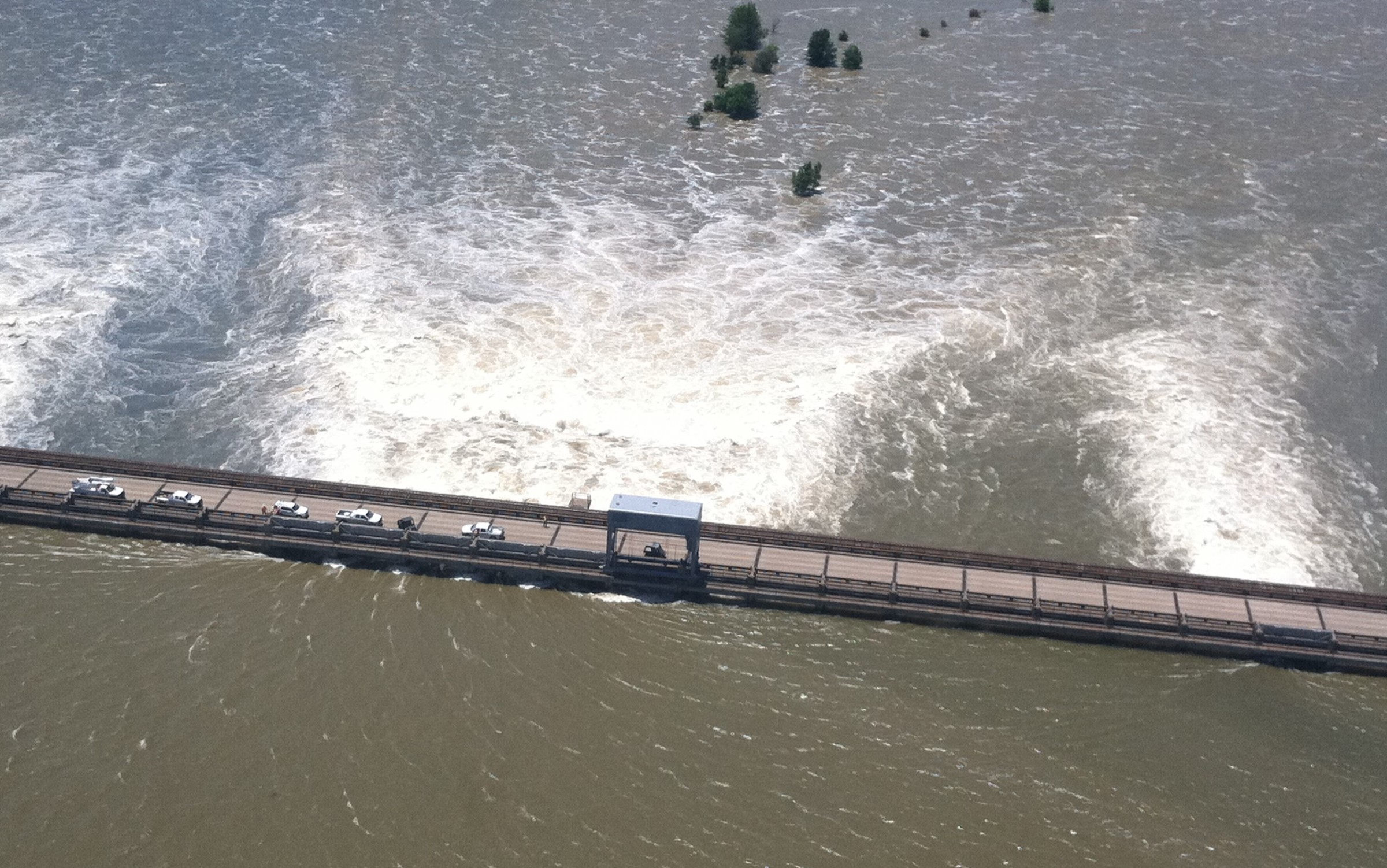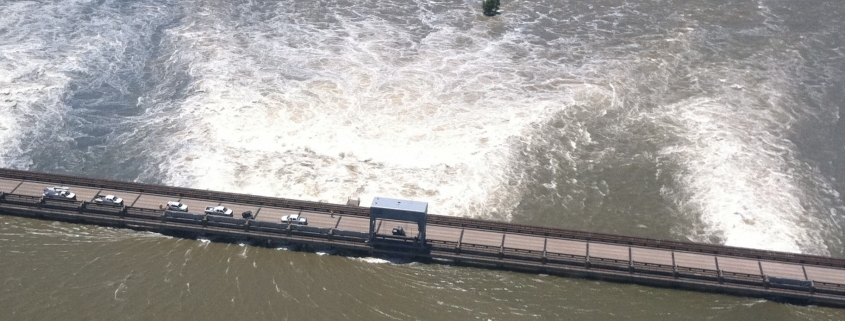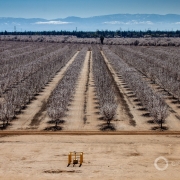In Mississippi River Flood Fight, Army Corps Prepares to Open Rarely Used Spillway
The Morganza spillway will redirect some of the river’s surging waters to protect Louisiana’s big cities and its levee system.

Aerial view of the Morganza spillway from 2011, the last time it was opened. Photo courtesy of Wikimedia Commons
By Brett Walton, Circle of Blue
To reduce pressure on the levees that defend Baton Rouge, New Orleans, and other southern Louisiana communities, the U.S. Army Corps of Engineers is preparing to open a rarely used flood-control structure on the Mississippi River.
On June 2, the Army Corps plans to open the Morganza spillway, a three-quarter-mile-long barrier that acts as a pressure-relief valve for the Mississippi. Used only twice since it was completed in 1954, the spillway shunts water into the Atchafalaya River basin and away from the big population centers downstream on the Mississippi.
The initial plan is to use only a quarter of the spillway’s capacity, but “weather, rain, and the river” will ultimately determine how much water needs to be diverted, Ricky Boyett, an Army Corps spokesman, told Circle of Blue. Still, some 150,000 cubic feet of water per second — a cubic foot is about the size of four basketballs — will thunder out of the spillway bays starting on Sunday.
After one of the wettest 12-month periods ever recorded in the watershed, the Mississippi has demanded attention for longer than usual. The river has been above elevation 11 feet in New Orleans for 215 consecutive days. That’s the elevation at which the Army Corps begins “flood fight” operations. The record, from 1973 and expected to be broken, is 225 days.
To tame the river’s surge, the Army Corps is also using the Bonnet Carre spillway, which channels water to the Gulf of Mexico through Lake Pontchartrain.
The flood fight in the lower Mississippi could last for many more weeks. That’s because feeder rivers in the upper reaches of the basin are also swollen with rain and snow melt from a historically wet winter and spring. The Missouri River at Jefferson City, Missouri, is expected to be in major flood stage into June. Towns along the Arkansas River, from Oklahoma to Arkansas, are experiencing near-record flooding. The river at Muskogee, Oklahoma, will be at major flood stage for weeks, according to the National Weather Service.
The last time Morganza was opened was in 2011. The Army Corps is using lessons from that experience to guide its operations this year, Boyett said. Water will be let out slowly for the first three days in order to give wildlife in the spillway, especially black bears, time to evacuate.
There are farms and livestock downstream as well as some oil wells, Boyett said. The Army Corps does not own the land within the floodway, but it has an easement that allows for flood operations. A Louisiana Geological Survey assessment found that the 2011 opening caused $56 million in economic damages that could be estimated, largely due to crop losses. The analysis did not look at damage to fisheries or to homes and camps.
Boyett also acknowledged the hunting and fishing camps in the floodway. He did not have an estimate for the number of people who might be affected, but said that local officials are working to alert anyone living there that the land will soon be flooded.
At the end of the floodway is Morgan City, population 11,000. Water released from Morganza takes three days to reach the city, and local officials are closing gates in their flood wall. Water levels are expected to be a little below those in 2011.
Brett writes about agriculture, energy, infrastructure, and the politics and economics of water in the United States. He also writes the Federal Water Tap, Circle of Blue’s weekly digest of U.S. government water news. He is the winner of two Society of Environmental Journalists reporting awards, one of the top honors in American environmental journalism: first place for explanatory reporting for a series on septic system pollution in the United States(2016) and third place for beat reporting in a small market (2014). He received the Sierra Club’s Distinguished Service Award in 2018. Brett lives in Seattle, where he hikes the mountains and bakes pies. Contact Brett Walton











Leave a Reply
Want to join the discussion?Feel free to contribute!